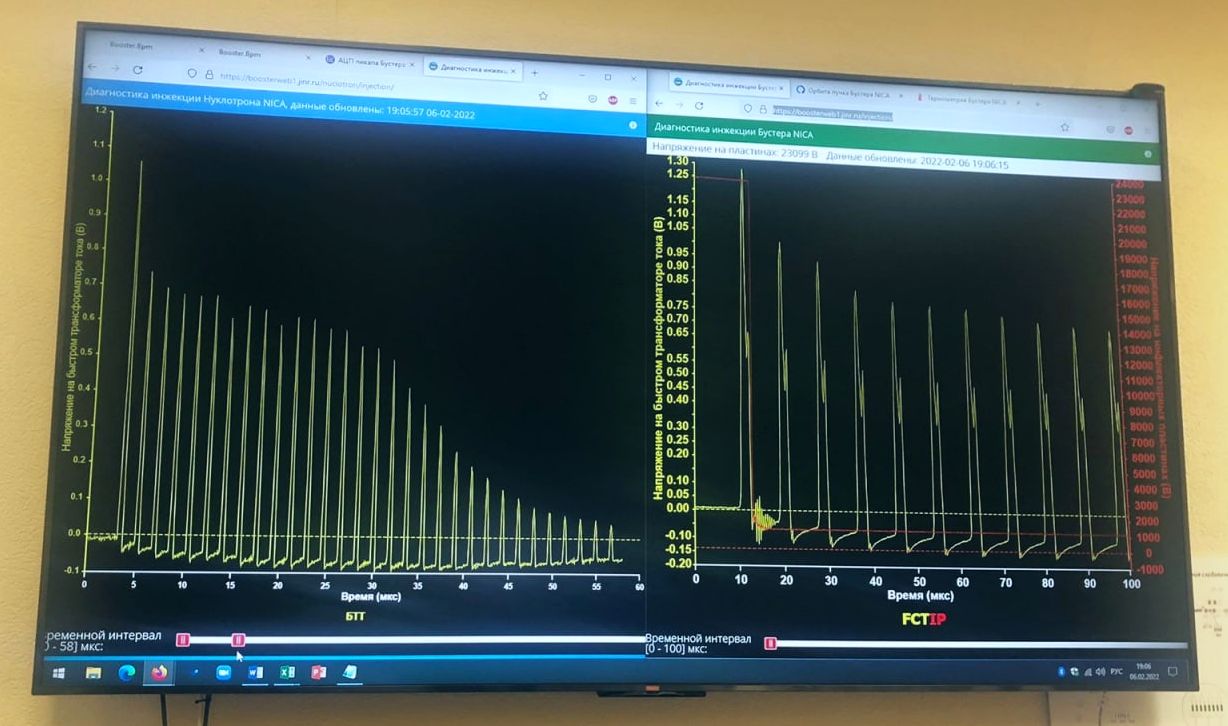Beam circulation in Nuclotron ring obtained
Media, 07 February 2022
Yesterday, on 6 February 2022, a stable circulation of the carbon ion beam was obtained in the ring of the synchrotron Nuclotron after injection from the Booster. A team of accelerator scientists of the NICA project has been working hard for this result for more than two weeks of intense round-the-clock shifts. The event took place in the framework of the third commissioning cycle that started in January.
The current commissioning cycle was preceded by plenty of works on installing new equipment and new subsystems. In particular, a new injection system from the Booster to the Nuclotron was installed. It includes the unique superconducting Lambertson magnet and the injection kicker.
As a result of commissioning, a free beam circulation with several dozens of revolutions was reached, without the correction system of the magnetic field switching on. It is noteworthy that the Nuclotron was dormant while the HILAC (heavy-ion linear accelerator), the Booster, and the beam extraction channel into the Nuclotron were being built. The previous heavy ion acceleration run at it took place in the spring of 2018, i.e. almost 4 years ago. This means that in fact the launch of the Nuclotron in the ongoing commissioning cycle may be referred to as the “first” launch of the accelerator since a part of its systems has undergone modernisation, so it is not exactly the synchrotron it used to be.
“It is a significant step in this commissioning cycle,” VBLHEP JINR Deputy Director Andrey Butenko noted. “It will allow proceeding to the next stages of acceleration and extraction of a beam from the Nuclotron thus to conduct physical experiments.”
Transportation of the extracted beam through the new channel from the Nuclotron to the BM@N facility will follow the extraction commissioning. It is important that the vacuum system of the ion conduit together with the pumping, as well as the power supply system of magnetic elements have also been drastically modernised. In practice, the entire power supply system of magnets of the channel is fully replaced, and the new system radically differs from the original one (that of 1974) in terms of both technical solutions and their implementation at the highest modern level. The Laboratory of High Energy Physics is planning its testing and commissioning in the future.

